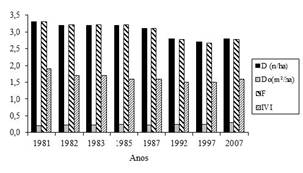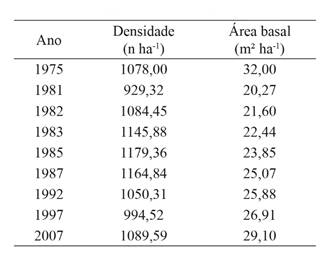ABSTRACT
Changes in the structure of Manilkara huberi population in a 64 ha area at the Tapajos National Forest were evaluated in a 26-year period after logging. Data were obtained in 36 50m x 50m permanent sample plots that were assessed in eight occasions from 1981 to 2007, after the timber harvest, considering trees with DBH (diameter at 1,30m above the ground) > 5cm. Density, frequency, basal area and importance value index of the species in the eight occasions were calculated. Diameter distribution of Manilkara huberi four years before logging was compared to diameter distribution 28 years after logging. Manilkara huberi population was lightly dynamic on abundance, frequency and basal area in the study area during the 26-year period after logging, indicating the need of a special and suitable management and silvicultural treatments to boost its natural regeneration and the growth of the young trees. Basal area of the species is growing very slowly indicating that it will probably need more than one hundred years to recover the initial stock.
Keywords:
forest management; forest dynamics; Amazonia

 Thumbnail
Thumbnail
 Thumbnail
Thumbnail
 Thumbnail
Thumbnail
 Thumbnail
Thumbnail




